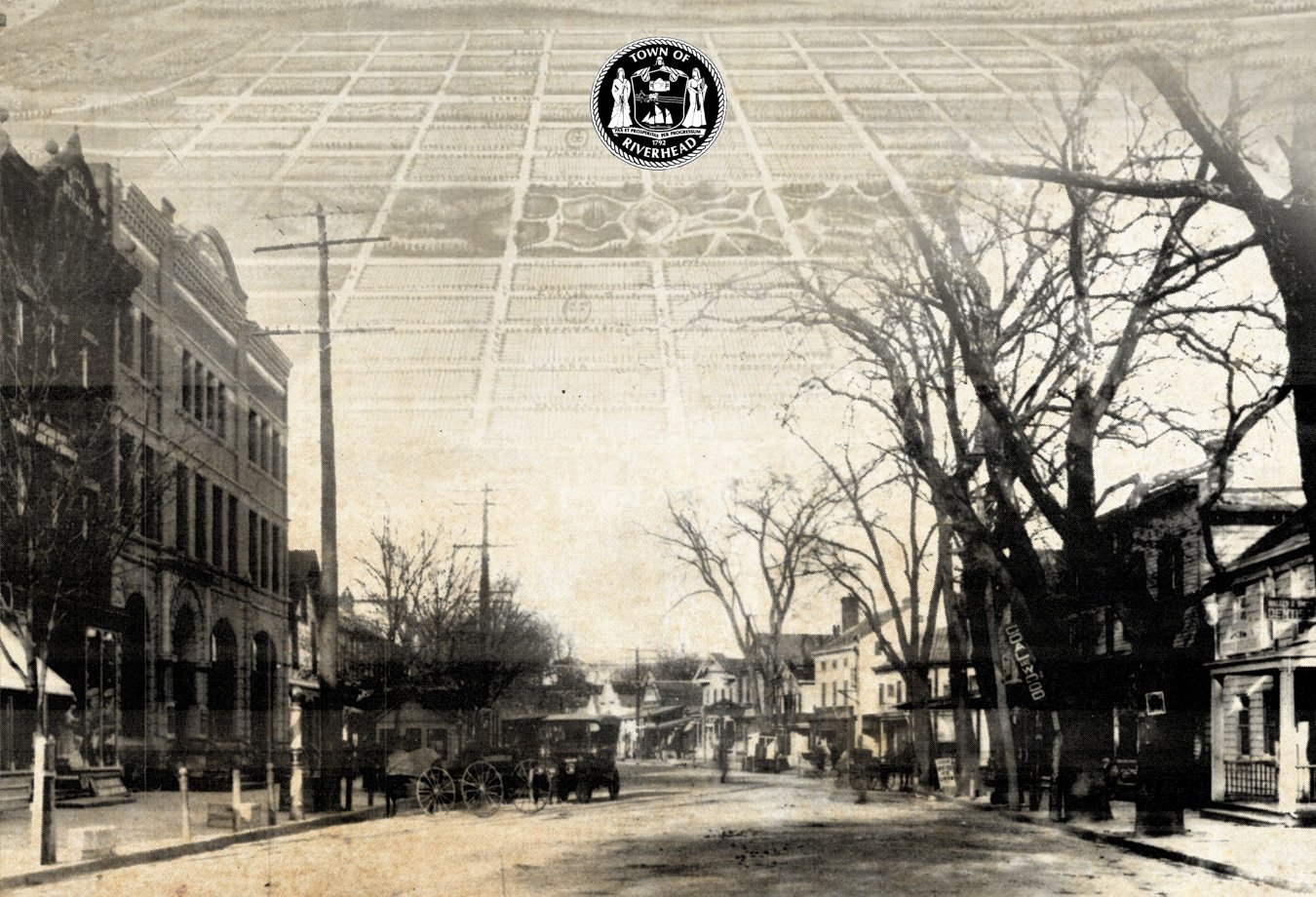
SCROLL BELOW FOR A MAP OF ALL THE STOPS ON THE TOUR.
SCROLL BELOW FOR TEXT OF THIS STOP
-
Suffolk County Courthouse
1928
235 Griffing Avenue
Narrator: Vollney Liddell [with a Louisiana accent]
Hello. I am the architect M. Vollney Liddell. I was born in Louisiana, but I moved around a lot. I was living in Mattituck in 1927 when the County Supervisors gave me the commission to design a new Suffolk County Courthouse after the old one burned down that Easter. That building was built in 1855 building to replace the original 1727 courthouse on West Main Street. If you haven’t been there already, you will learn more about the 1727 building when you get to Main Street. I was also the architect for the new Aquebogue School built about the same time.
The supervisors wanted the new courthouse to be fireproof, so we built it entirely of brick and steel. I designed an imposing facade dominated by six stylized Corinthian columns. Each of those weighs nearly 20 tons and they are intended to symbolize the strength of government.
In the pediment notice the bas-relief figure of a plowman with a bull surrounded by a cornucopia of fruit and vegetables to indicate the county’s rural roots. The bronze lampposts on the sides of the steps are in the shape of fasces, the bundle of rods bound together around an ax blade that was carried before the magistrates of ancient Rome as a symbol of law. Also notice the heavy bronze main doors.
There was a unique two-story octagon-shaped jail building behind the 1855 courthouse. The state ordered this “relic of the dark ages” closed in 1910, but it was still standing in 1927. We demolished part of it to make more room for the new building. We salvaged the large granite blocks from the octagon for the low wall in front of the courthouse.
The last hanging in the county took place in the courtyard of that jail in 1888. Francis Ashbury Hawkins, age 23, from one of Suffolk County’s well-to-do families, had settled his fancies on a humble waitress, much to the disdain of his mother. Being obliged to marry the pregnant woman as soon as possible, he asked his mother to accept her into their family. Mrs. Hawkins refused to consider the matter and threatened to disinherit her son if he married “that wench.” While on a buggy ride in Islip with his mother, the young man made one last attempt to talk her into accepting the young woman. Once again she refused, so Francis pulled out a gun and shot his mother point blank in the face. He was executed at Riverhead on December 11, 1888.
What do you think of this annex they added on the left side of my beautiful buildings in 1963? Too bad I wasn’t still around to help!
Look to the right, on the other side of Court Street. That handsome building was built in 1926 by the Title Guarantee and Trust Company. It was conveniently located next to the courthouse so you could file your title there and go across the street to have it guaranteed and get your mortgage. It has a solid classical design and has been beautifully restored by the Israel family.










